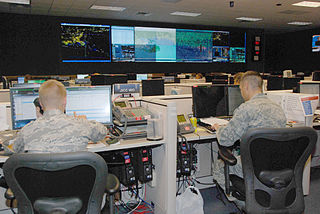 W
WAn Air Operations Center (AOC) is a type of command center used by the United States Air Force (USAF). It is the senior agency of the Air Force component commander to provide command and control of air operations.
 W
WThe AN/APG-68 radar is a long range Pulse-doppler radar designed by Westinghouse to replace AN/APG-66 radar in the F-16 Fighting Falcon. The AN/APG-68(V)8 and earlier radar system consists of the following line-replaceable units:Antenna Dual Mode Transmitter (DMT) Modular Low-power radio frequency (MLPRF) Programmable signal processor (PSP)
 W
WThe AN/AQS-13 series was a helicopter dipping sonar system for the United States Navy. These systems were deployed as the primary inner zone anti-submarine warfare (ASW) sensor on aircraft carrier based helicopters for over five decades. Companion versions with the AQS-18 designation were exported to various nations around the globe.
 W
WThe AN/ARC-164 is an aircraft station that operates in the aeronautical mobile (OR) service / B band (NATO). It might be found on B-52G/H, B-1B, C/EC/RC-26D, KC-135, C-23, C-130, C-141, F-15, A-10, F-16, UH-1D, CH-47, H-53, H-60 and S-3B aircraft.
 W
WAN/PVS-4 is the U.S. military designation for a specification of the first second generation passive Night vision device.
 W
WThe AN/SPY-1 is a United States Navy 3D radar system manufactured by Lockheed Martin. The array is a passive electronically scanned system and is a key component of the Aegis Combat System. The system is computer controlled, using four complementary antennas to provide 360 degree coverage. The system was first installed in 1973 on USS Norton Sound and entered active service in 1983 as the SPY-1A on USS Ticonderoga. The -1A was installed on ships up to CG-58, with the -1B upgrade first installed on USS Princeton in 1986. The upgraded -1B(V) was retrofitted to existing ships from CG-59 up to the last, USS Port Royal.
 W
WThe AN/SQQ-89 Undersea Warfare Combat System is a naval anti-submarine warfare (ASW) system for surface warships developed by Lockheed Martin for the United States Navy. The system presents an integrated picture of the tactical situation by receiving, combining and processing active and passive sensor data from the hull-mounted array, towed array and sonobuoys. AN/SQQ-89 is integrated with the AEGIS combat system and provides a full range of undersea warfare (USW) functions including active and passive sensors, underwater fire control, onboard trainer and a highly evolved display subsystem. It provides detection, classification, and targeting capability to the following platforms:Ticonderoga-class cruiser Arleigh Burke-class destroyer
 W
WThe Collins 207B-1 was a radio transmitter manufactured in 1951 by Collins Radio Company.
 W
WThe AN/PSN-13 Defense Advanced GPS Receiver is a handheld GPS receiver used by the United States Department of Defense and select foreign military services. It is a military-grade, dual-frequency receiver, and has the security hardware necessary to decode the encrypted P(Y)-code GPS signals.
 W
WDirectional Infrared Counter Measures (DIRCM) are a class of anti-missile systems produced to protect aircraft from infrared homing MANPADS. It is a light-weight and compact system designed to provide mission-vulnerable aircraft with increased protection from common battlefield threats. It is more advanced than conventional infrared countermeasures. Aerospace companies, such as Leonardo S.p.A., Elbit Systems, Northrop Grumman, ITT Corporation, and BAE Systems, are designing these systems.
 W
WThe Distributed Common Ground System (DCGS) is a system which produces military intelligence for multiple military branches.
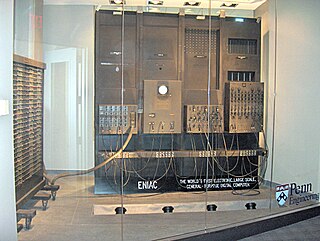 W
WENIAC was the first programmable, electronic, general-purpose digital computer. It was Turing-complete, and able to solve "a large class of numerical problems" through reprogramming.
 W
WForce XXI Battle Command Brigade and Below (FBCB2) is a Linux-based communication platform designed for commanders to track friendly and hostile forces on the battlefield. It increases a vehicle commander's situational awareness of the battlefield by gathering information near real-time based on vehicle locations being updated on the battlefield. This information is viewed graphically, and exchanged via both free and fixed text message formats.
 W
WThe Joint Surveillance System (JSS) is a joint United States Air Force and Federal Aviation Administration system for the atmospheric air defense of North America. It replaced the Semi Automatic Ground Environment (SAGE) system in 1983.
 W
WLow Altitude Navigation and Targeting Infrared for Night, or LANTIRN, is a combined navigation and targeting pod system for use on the United States Air Force fighter aircraft — the F-15E Strike Eagle and F-16 Fighting Falcon. LANTIRN significantly increases the combat effectiveness of these aircraft, allowing them to fly at low altitudes, at night and under-the-weather to attack ground targets with a variety of precision-guided weapons.
 W
WThe AN/AAQ-28(V) LITENING targeting pod is an advanced precision targeting pod system currently operational with a wide variety of aircraft worldwide. The research and development of the LITENING was first undertaken by Rafael Advanced Defense Systems' Missiles Division in Israel, with subsequent completion of LITENING I for use in the Israeli Air Force.
 W
WRadio antenna kites are used to carry a radio antenna aloft, higher than is practical with a mast. They are most often associated with portable radio systems, usually with pre-World War I field equipment, and were also occasionally used to increase radio range on Naval ships. The use of kite supported antennae was limited because of difficulty in maintaining consistent antenna height, unpredictability of the wind, and improvements in radio antenna, transmission, and reception. During World War II and after they were used in conjunction with survival radios issued to aircraft flying over-water missions.
 W
WThe Multi-role Electronically Scanned Array (MESA) is a surveillance radar system for the Boeing 737 AEW&C airborne early warning and control aircraft. The radar is produced by Northrop Grumman.
 W
WThe Ford Aerospace AN/AVQ-10 Pave Knife was an early targeting pod developed by the USAF and US Navy to designate and guide laser-guided bombs.
 W
WThe Lockheed Martin AN/AAS-35(V) Pave Penny was a laser spot tracker carried by US Air Force attack aircraft and fighter-bombers to enable them to track a laser spot on the ground. PAVE was later used as an acronym for Precision Avionics Vectoring Equipment.
 W
WThe Westinghouse AN/ASQ-153\AN/AVQ-23 Pave Spike is an electro-optical laser designator targeting pod used to direct laser-guided bombs to target in daylight, visual conditions. It contained a laser boresighted to a television camera, which displayed its image on a cockpit screen.
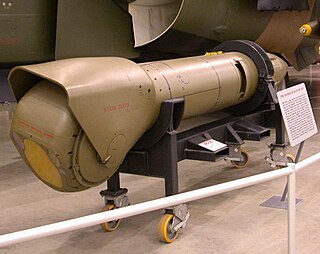 W
WThe Ford Aerospace AN/AVQ-26 Pave Tack is an electro-optical targeting pod for military attack aircraft. It uses a laser and a forward looking infrared to find and designate targets for laser-guided bombs and other precision-guided munitions. Pave Tack's images are routed to a cockpit display, usually for the weapon systems officer.
 W
WThe AN/PSN-11 Precision Lightweight GPS Receiver is a ruggedized, hand-held, single-frequency GPS receiver fielded by the United States Armed Forces. It incorporates the Precise Positioning Service — Security Module (PPS-SM) to access the encrypted P(Y)-code GPS signal.
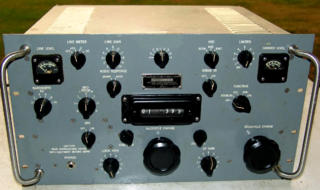 W
WThe R-390A /URR is a general coverage HF radio communications receiver designed by Collins Radio Company for the US military.
 W
WThe Radio tractor was a mobile Signal Corps Radio used by the U.S. Army for ground communications before and during World War I. Prior to World War I, trucks were referred to as "tractors", and there were also telegraph tractors, and telephone tractors.
 W
WThe Radio tractor was a mobile Signal Corps Radio used by the U.S. Army for ground communications before and during World War I. Prior to World War I, trucks were referred to as "tractors", and there were also telegraph tractors, and telephone tractors.
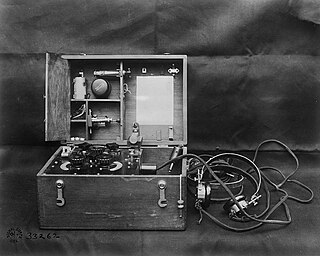 W
WThe SCR-54 was a tunable, portable crystal radio receiver used by the U. S. Army during World War I for fire control in conjunction with airplanes.
 W
WThe SCR-108 Radio Truck was a mobile Signal Corps Radio used by the United States Army during and after World War I for short range air-to-ground communications,
 W
WThe SCR-108 Radio Truck was a mobile Signal Corps Radio used by the United States Army during and after World War I for short range air-to-ground communications,
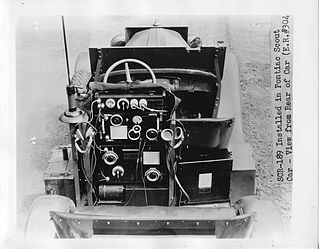 W
WThe SCR-189 was a mobile Signal Corps Radio tested by the United States Army before World War II. It was designed for armored forces, and mounted in the Six Ton Tank M1917. The original production run of these tanks included 50 "radio tanks" but the original radio components are unknown, so what or how many tanks were fitted with the SCR-189 also appears to be unknown.
 W
WThe SCR-189 was a mobile Signal Corps Radio tested by the United States Army before World War II. It was designed for armored forces, and mounted in the Six Ton Tank M1917. The original production run of these tanks included 50 "radio tanks" but the original radio components are unknown, so what or how many tanks were fitted with the SCR-189 also appears to be unknown.
 W
WThe SCR-245 Radio was a mobile MF/HF Signal Corps Radio used by the U.S. Army before and during World War II, for short range ground communications, It was one of the first crystal controlled sets used by the Army.
 W
WThe SCR-277 was a mobile, trailer mounted radio range set for radio guidance of aircraft. It was standardized by the U.S. Army in June 1941.
 W
WThe SCR-284 was a World War II era combination transmitter and receiver used in vehicles or fixed ground stations.
 W
WThe SCR-299 was a U.S. Signal Corps mobile military communications unit used during World War II.
 W
WThe SCR-300 was a portable radio transceiver used by US Signal Corps in World War II. This backpack-mounted unit was the first radio to be nicknamed a "walkie talkie".
 W
WThe SCR-508 radio was a mobile Signal Corps Radio used by the U.S. Army during World War II, for short range ground communications. The SCR-508 series radio represented the Army's commitment to both FM and crystal tuning, and was used extensively by armor and mechanized units. The turret bustle of late series light and medium tanks was designed around this radio.
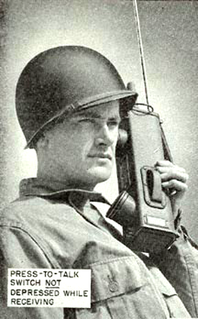 W
WThe SCR-536 was a hand-held radio transceiver used by the US Army Signal Corps in World War II. It is popularly referred to as a walkie talkie, although it was originally designated a "handie talkie".
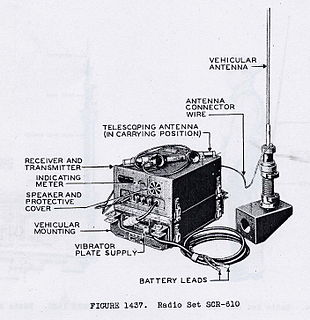 W
WThe SCR-610 was a Signal Corps Radio used by the U.S. Army during and after World War II, for short range ground communications, it was standardized 29 Sept. 1941,
 W
WThe SCR-694 was a portable two way radio set used by the U.S. military during World War II.
 W
WSHORAN is an acronym for SHOrt RAnge Navigation, a type of electronic navigation and bombing system using a precision radar beacon. It was developed during World War II and the first stations were set up in Europe as the war was ending, and was operational with Martin B26 Marauders based in Corsica, and later based in Dijon and in B26's given to the South African Airforce in Italy. The first 10/10 zero visibility bombing was over Germany in March 1945. It saw its first combat use in the B-25, B-26 and B-29 bomber aircraft during the Korean War.
 W
WSingle Channel Ground and Airborne Radio System (SINCGARS) is a Combat Net Radio (CNR) currently used by U.S. and allied military forces. The CNR network is designed around three systems: SINCGARS, the high frequency (HF) radio, and the SC tactical satellite (TACSAT). Each system has different capabilities and transmission characteristics. SINCGARS is a family of user-owned and operated, very high frequency-frequency modulation (VHF-FM) CNRs. As a part of the CNR network, the SINCGARS’ primary role is voice transmission for command and control (C2) between surface and airborne C2 assets. SINCGARS can transmit and receive secure data and facsimile transmissions through simple connections with various data terminal equipment.
 W
WThe Lockheed Martin Sniper is a targeting pod for military aircraft that provides positive target identification, autonomous tracking, GPS coordinate generation, and precise weapons guidance from extended standoff ranges.
 W
WThe AN/UQQ-2 Surveillance Towed Array Sensor System (SURTASS), colloquially referred to as the ship's "Tail", is a towed array sonar system of the United States Navy.
 W
WTactical Vest Antenna System (TVAS) is a type of wearable antenna designed for use by the United States Armed Forces. It is claimed that troops equipped with the TVAS are more effective than traditional whip antenna-equipped troops due to better concealment of the equipment and mobility improvement to the operator. TVAS was developed by Wearable Antenna Technologies Inc. in early 2008.
 W
WThe Tartar Guided Missile Fire Control System is an air defense system developed by the United States Navy to defend warships from air attack. Since its introduction the system has been improved and sold to several United States allies.
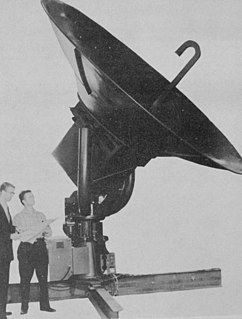 W
WWSR-57 radars were the USA's main weather surveillance radar for over 35 years. The National Weather Service operated a network of this model radar across the country, watching for severe weather.